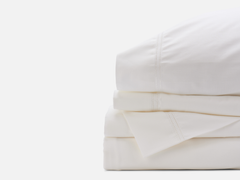Quilts are wonderful additions to any home. They aren’t just for keeping you warm: they also function as a centerpiece that can completely alter the ambiance of a room. A quilt provides many benefits, but it’s up to you to care for it, so you can continue to enjoy it. If you aren’t sure how to do this, that’s okay. We’ll go over ways you can care for your cotton quilt and things you should avoid to keep it in pristine condition and continue to enjoy it as the years pass. Check out what we have to say about the dos and don’ts of caring for your quilts below. You’ll be happy you did.
What Should You Do?
You should do several things when caring for your quilt. Check out what you should do below.
Follow the Instructions
When you buy that quilt, follow our care instructions to a tee. If you need specific instructions on washing and caring for your quilt, the information will be included in the box and on the care tag stitched to the quilt. Adhere to these principles, as they’re specifically designed to ensure your quilt stays pristine if you follow them.
Use a Gentle Detergent
If you use a detergent with harsh chemicals, you’re bound to cause color loss or even bleaching. Hard detergents cause fibers to break down, weakening the fabric. It can also cause spotty discoloration and fading, which is a serious issue if you want the quilt to stand out against or mesh well with the colors of your room. You want the detergent you choose to be for delicates to ensure your quilt’s longevity.
Pretreat Stains
If your quilt has stains, it’s important to pretreat them before throwing it in the washing machine. You’ll be happy you did this since it makes getting stains out much easier. Use a stain remover, water, and a dab of detergent—mild, of course—to spot clean the stained area. You shouldn’t scrub vigorously at this point, though it might be tempting. Scrubbing too hard could damage the fabric’s fibers, leading to rips and tears.
Wash in Cold Water
Make sure you wash your quilt in cold water. If the water is too hot, it can cause fading and shrinkage, shortening the life span of your quilt. Cold water also prevents excessive wear and tear and helps preserve colors. When you wash your quilt in cold water, you can enjoy a bright and vibrant quilt every time you step into the room or pull it over yourself.
Use a Gentle Washing Cycle
Choose a gentle cycle on your washing machine—never choose heavy-duty or regular cycles since they’ll cause too much friction and damage your quilt fibers. You want to minimize agitation as much as possible. This prevents excessive stress on your quilt stitching and fabric, ensuring you’ll have it for years.
Do a Gentle Dry
When it comes to drying your quilt, you can do it in several ways. The best option is to air-dry it—you can even do this the old-fashioned way on a clothesline. While air-drying is the gentlest method, you can also put your quilt in the dryer on a low heat setting. Keep the heat low because excessive heat causes shrinkage and damages fibers. Add a few tennis balls or dryer balls to help fluff your quilt and distribute the filling evenly.
Store It Well
Make sure you store your quilt properly. Using it as a throw is okay, but you shouldn’t store it in a plastic bag since you risk mildew and moisture. Instead, place the quilt in a cotton storage bag or wrap it in a cotton sheet when you’re not using it. Make sure it’s completely dry before you store it.
What Shouldn’t You Do?
When discussing the dos and don’ts of caring for your quilt, we must avoid the wrong things in our quilt care regimen. What are those things? Read on below.
Don’t Overload the Washing Machine
Overloading your washing machine while washing your quilt puts excessive strain on the quilt. This can lead to some parts being cleaned unevenly or tearing altogether. In an overloaded washer or dryer, water and detergent won’t even begin to cover the length of the quilt. Ensure your quilt has enough room to move about freely in the machine.
Don’t Expose It to Direct Sunlight
Prolonged exposure to direct sunlight causes colors to fade and weakens fibers within the fabric. When drying your quilt outdoors, ensure you do so in a shaded area, and keep it away from the harsh sunlight.
Don’t Iron Too Much
Ironing your quilt every so often is okay, but you shouldn’t iron it excessively. Excessive heat can damage cotton. When you iron your quilt, do it on a low heat setting to avoid damaging the fibers. You should also place thin cotton clothes between the iron and the quilt to protect it better. If you do this, you don’t have to worry about the fibers breaking down over time.
Don’t Ignore Repairs
Despite your best efforts, it’s important to remember that things happen. Sometimes, you’ll spill on your quilt, or you might accidentally rip it. Wear and tear can often occur to those items that we cherish. Since this is the case, you must repair your quilt quickly when you notice any issues. A loose thread can quickly unravel an entire quilt, and one spot can turn into many spots soiling your precious quilt over time.
Don’t Wash Too Frequently
Over-washing your cotton quilt can cause unnecessary wear and tear. If it’s not visibly soiled, leave it alone. Washing it once or twice a year is enough to keep it clean. Any more than that can ruin your quilt’s fibers due to excessive friction from the washing machine.
In short, preserving your quilt’s comfort, beauty, and quality is important. The best way to do that is to follow the parameters we’ve outlined. When you implement everything we taught you here, you’ll be well on your way to a beautiful and healthy quilt. If you’re interested in picking up some of our American-made quilts and shams, we’ve got you covered here at Red Land Cotton. We have bathrobes, towels, and bedding for you to check out. Get in touch with us today!










